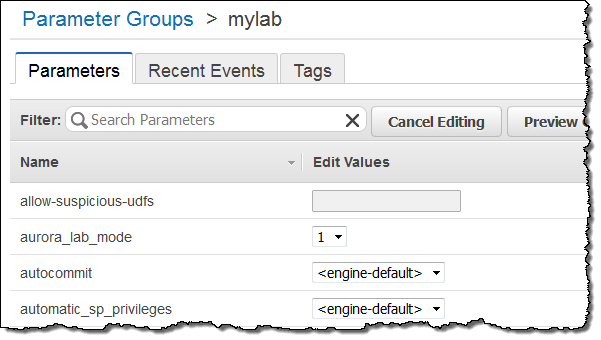AWS News Blog
Amazon Aurora Update – Spatial Indexing and Zero-Downtime Patching
Despite stiff competition from many other AWS services, Amazon Aurora is still the fastest-growing service in AWS history! Our customers love the speed, performance, and availability. They are making great use of the MySQL compatible side of Aurora today, and are looking forward to using the PostgreSQL compatible side in the future (read Amazon Aurora Update – PostgreSQL Compatibility to learn more and to see a list of other recent additions to Aurora).
Today we are launching two features that were announced at AWS re:Invent: spatial indexing and zero-downtime patching.
Spatial Indexing
Amazon Aurora already allows you to use the GEOMETRY data type to represent points and areas on a sphere. You can create columns of this type and then use functions such as ST_Contains, ST_Crosses, and ST_Distance (and many others) to perform spatial queries. These queries are powerful, but can be inefficient to process at scale, limiting their usefulness for large data sets.
In order to allow you to build large-scale, location-aware applications using Aurora, you can now create a specialized, highly-efficient index on your spatial data. Aurora uses a a dimensionally ordered space-filling curve (for you mathematical types) to make your retrievals fast, accurate, and scalable. The index uses a b-tree and delivers performance that is up to two orders of magnitude better than MySQL 5.7 (watch this segment of the Amazon Aurora Deep Dive video or review the presentation for details).
You will need to enable Aurora Lab Mode in order to make use of this new feature. After you have done this, you can add spatial indexes to existing tables or create new tables that include spatial indexes (read Amazon Aurora and Spatial Data to learn more).

Zero-Downtime Patching
In today’s 24×7 world, there’s never a good time to take a database offline for patches and other updates. Although it is possible to maintain high availability by using read replicas and promotion, there’s always room to do better.
Our new zero-downtime patching feature allows Aurora instances to be updated in place, with no downtime and no affect on availability. This feature works with instances that are running the current (1.10) version of Aurora, and works on a best-effort basis. It works for both single node clusters and for the writer instance in multi-node clusters, but cannot function if binary logging is active.
The patching mechanism pauses while waiting for open SSL connections, active locks, pending transactions, and temporary tables to clear up. If a suitable time window appears, the patch is made in zero-downtime fashion. Application sessions are preserved and the database engine restarts while the patch is in progress, leading to a transient (5 second or so) drop in throughput. If no suitable time window becomes available, patching reverts to the standard behavior.
To learn more about how this works and how we implemented it, watch this segment of the Amazon Aurora Deep Dive video.
Available Now
These new features are available now and you can start using them today!
— Jeff;
